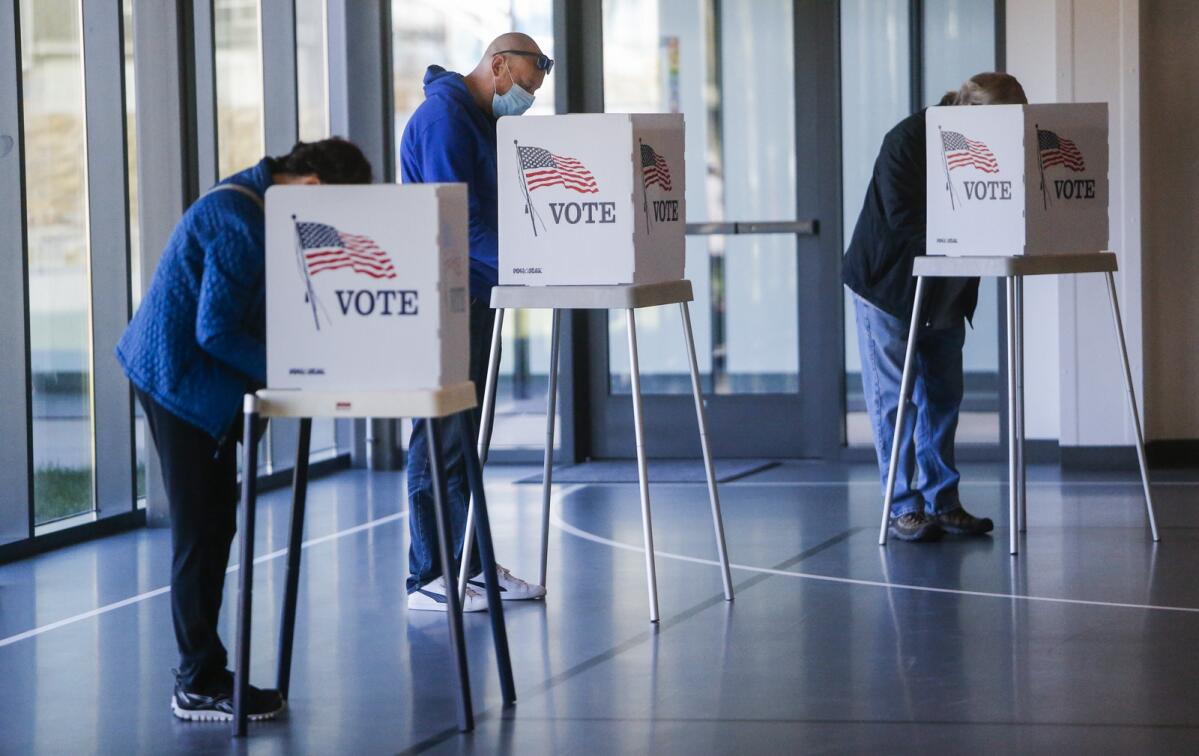| Scott Mccaffrey ∙ Sun Gazette |
VIRGINIA — With the 2021 election season a blissfully fading memory, it’s time to turn to 2022 – and the possibility that ranked-choice voting will be implemented for Arlington County Board races.
Following an early-October work session on the subject between Arlington County Board members and election-office staff, there appears to have been a period of quiet reflection among board members.
”A final decision could come by spring.
That’s appreciated by election officials – they did have to contend with running an election, after all – but with that out of the way, “we do anticipate more news from them, eventually,” county elections chief Gretchen Reinemeyer told Electoral Board members on Nov. 30.
The work session was beneficial, Electoral Board chair Matt Weinstein said. “I think the County Board learned a lot about the process,” he said.
Legislation approved by the General Assembly in 2020 gave Arlington board members the power to switch County Board elections from winner-take-all, which they have been since the start of that body in the 1930s, to ranked-choice, where voters can (but are not obligated to) list candidates in order of preference.
If no candidate wins more than 50 percent of the vote on the first ballot, the lowest-scoring candidate is eliminated and his or her votes reallocated as directed by his/her voters. The process continues as many rounds as necessary until one candidate emerges with a majority.
The October work session on the topic saw several County Board members get down in the weeds so deep that they were cautioned about it by board chair Matt de Ferranti. Board members at that meeting fended off accusations that they are stalling on implementing a change, because they fear it might imperil the Democratic grip on power in Arlington.
Whether the format will have any noticeable impact on general-election results is debatable. In November, Democrat Takis Karantonis won 60 percent of the vote in a four-way race, suggesting that no nominee of Arlington’s dominant political party need worry about failing to gain a majority.
The impact more likely would be felt in Democratic County Board primaries, which also now can be switched to the ranked-choice method.
In fact, ranked-choice voting is not an enigma to many Arlington voters.
The Arlington County Democratic Committee uses it for many of its nominating contests (although not in state-run primaries), and the Republican Party of Virginia this year used it to select nominees for governor, lieutenant governor and attorney general.
Two Arlington elected officials – Karantonis himself and School Board member David Priddy – owe their seats to the ranked-choice method. Both were trailing other candidates in Democratic nominating contests last year, but catapulted over them in later rounds to emerge victorious.
Supporters of the process say it ensures winning candidates have a broad base of support, eliminating the likelihood of fringe candidates in a large field of contenders sneaking into office with a fraction of the total vote.
County election officials have cautioned that there is an upper limit to how many candidates a voter would be able to rank, based on available technology. If a field was very large – say, 10 people – voters may only have the chance to ranks four or five.
(Many nations use a version of ranked-choice voting, but only one – Australia – allows voters to rank every candidate in any specific race.)
The 2020 legislation permitting Arlington to change the voting method does not require approval in a referendum, although it is likely the most major structural change in county elections in nearly 90 years. A final decision could come by spring.
“It’s in the board’s hands,” said Weinstein.





